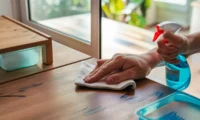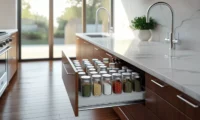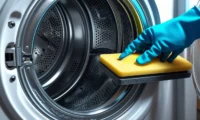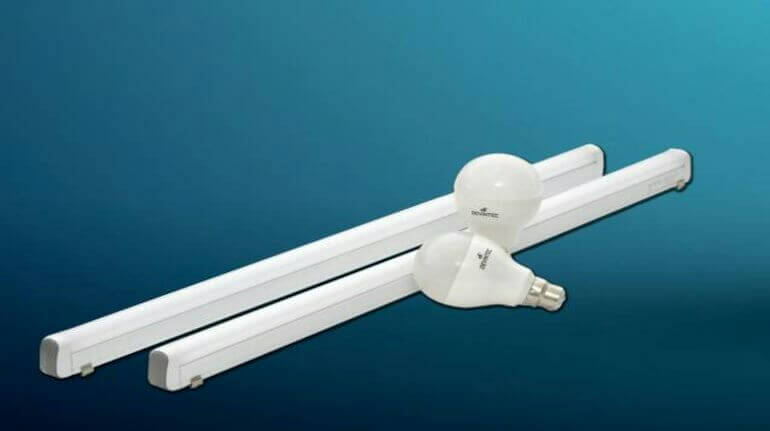You walk into your RV after it’s been sitting for a few weeks.
- Why Your RV Smells Like a Swamp Monster’s Armpit
- The Real Talk About Mildew vs Mold
- 💖 You Might Also Like
- My 5-Step System to Kill Mildew Smell Dead
- Step 1: Find the Source (Detective Work)
- Step 2: Strip Everything Down
- Step 3: The Washing Machine Massacre
- Step 4: Attack the Non-Removables
- Step 5: The Final Assault
- When to Call in the Big Guns
- Prevention is Your Best Friend
- ✨ More Stories for You
- The Products That Actually Work
- Common Mistakes That Make Things Worse
- FAQs About RV Mildew Removal
- How long does it take to remove mildew smell completely?
- Can I use essential oils to prevent mildew?
- Is mildew smell harmful to breathe?
- How often should I clean RV fabrics?
- What’s the best way to dry RV interiors after cleaning?
- Can I prevent mildew in humid climates?
- Should I replace moldy RV cushions?
- Do RV covers cause more moisture problems?
- 🌟 Don't Miss These Posts
- My Personal RV Mildew Horror Story
- The Bottom Line
That smell hits you like a brick wall.
Musty. Damp. Gross.
Your beautiful home on wheels smells like a wet basement.
I get it.
I’ve been there.
You’re not alone in this fight against mildew smell from RV camper interior fabric.
Why Your RV Smells Like a Swamp Monster’s Armpit
RVs are basically moisture magnets.
Here’s what happens:
- Small spaces trap humidity
- Poor ventilation makes it worse
- Fabrics absorb every drop of moisture
- Mildew parties like it’s 1999
The fabric in your RV – cushions, curtains, carpets – they’re all sponges waiting to go bad.
The Real Talk About Mildew vs Mold
People throw these words around like they’re the same thing.
They’re not.
Mildew is the surface-level stuff. White or gray. Powdery. Annoying but not dangerous.
Mold is the serious player. Black, green, or other funky colors. Goes deep. Can make you sick.
Both smell terrible. Both need to go.
💖 You Might Also Like
My 5-Step System to Kill Mildew Smell Dead
Step 1: Find the Source (Detective Work)
You can’t fix what you can’t see.
Check these spots:
- Under cushions
- Behind curtains
- Around windows
- In storage compartments
- Carpet edges
- Air vents
Take pictures. You’ll need them later.
Step 2: Strip Everything Down
Remove every piece of fabric you can.
Removable items:
- Cushion covers
- Throw pillows
- Blankets
- Curtains
Non-removable items:
- Built-in seating
- Carpets
- Wall fabric
Sort them into two piles. Washable and not washable.
Step 3: The Washing Machine Massacre
For washable fabrics, this is your weapon:
The Mix:
- 1 cup white vinegar
- 1/2 cup baking soda
- Regular detergent
- Hot water (if fabric allows)
The Process:
- Pre-soak for 30 minutes
- Run full cycle
- Air dry in sunlight (UV kills mildew)
- Smell test before bringing back
No fabric softener. It leaves residue that feeds mildew.
Step 4: Attack the Non-Removables
For stuff you can’t toss in the washer:
DIY Spray Recipe:
- 2 cups water
- 1 cup white vinegar
- 2 tablespoons dish soap
- 10 drops tea tree oil
Application:
- Spray heavily
- Let sit 15 minutes
- Scrub with soft brush
- Blot with clean towels
- Air dry completely
Step 5: The Final Assault
Carpet Treatment:
- Sprinkle baking soda everywhere
- Let sit overnight
- Vacuum thoroughly
- Steam clean if you have one
Air Freshening:
- Leave bowls of activated charcoal
- Run a dehumidifier
- Keep air moving with fans
When to Call in the Big Guns
Sometimes DIY isn’t enough.
Call professionals if:
- Smell comes back in 48 hours
- You see black spots (mold)
- Anyone gets sick
- Damage is extensive
Don’t mess around with your health.
Prevention is Your Best Friend
Once you win this battle, here’s how to never fight it again:
Moisture Control:
- Run exhaust fans during showers
- Use a dehumidifier
- Leave vents open
- Don’t hang wet clothes inside
Regular Maintenance:
- Monthly fabric inspections
- Weekly ventilation checks
- Immediate cleanup of spills
- Seasonal deep cleans
Storage Tips:
- Leave cushions up when storing
- Keep interior doors open
- Use moisture absorbers
- Check on your RV monthly
✨ More Stories for You
The Products That Actually Work
I’ve tested dozens of products.
These are the ones that don’t suck:
For Cleaning:
- White vinegar (cheap and effective)
- Concrobium Mold Control
- RMR-86 Instant Mold Stain Remover
- Simple Green Pro HD
For Prevention:
- DampRid moisture absorbers
- Eva-Dry dehumidifiers
- Activated charcoal bags
Common Mistakes That Make Things Worse
Using bleach on fabrics
- Ruins colors
- Weakens fibers
- Doesn’t kill mildew roots
Not drying completely
- Mildew loves damp conditions
- Always air dry everything
- Use fans to speed it up
Covering up the smell
- Air fresheners mask problems
- They don’t solve anything
- Fix the cause, not the symptom
FAQs About RV Mildew Removal
How long does it take to remove mildew smell completely?
With proper treatment, 24-48 hours for the smell to disappear. Prevention is ongoing.
Can I use essential oils to prevent mildew?
Tea tree, lavender, and eucalyptus oils have antimicrobial properties. Add 10-15 drops to your cleaning solution.
Is mildew smell harmful to breathe?
Mildew can trigger allergies and respiratory issues. It’s not as dangerous as mold, but still needs to be addressed.
How often should I clean RV fabrics?
Deep clean every 3-4 months. Spot clean immediately when needed.
What’s the best way to dry RV interiors after cleaning?
Cross-ventilation with fans, dehumidifiers, and opening all windows and vents on sunny days.
Can I prevent mildew in humid climates?
Yes, but you need consistent moisture control. Use dehumidifiers, improve ventilation, and check regularly.
Should I replace moldy RV cushions?
If mold has penetrated deep into foam, replacement might be necessary. Surface mildew can usually be cleaned.
Do RV covers cause more moisture problems?
Poor-quality covers can trap moisture. Breathable covers or partial covering works better.
🌟 Don't Miss These Posts
My Personal RV Mildew Horror Story
Last summer, I stored my travel trailer for two months.
Came back to what looked like a science experiment.
White fuzzy stuff everywhere.
Smell so bad my dog wouldn’t go inside.
I tried every hack on YouTube.
Most were garbage.
The system I shared above?
That’s what actually worked.
Took three days of intensive cleaning.
But my RV smelled fresh again.
Now I follow my prevention routine religiously.
Haven’t had a problem since.
The Bottom Line
Removing mildew smell from RV camper interior fabric isn’t rocket science.
It’s about being thorough.
Finding the source.
Treating it properly.
And preventing it from coming back.
Your RV should smell like adventure.
Not like a forgotten gym bag.
Follow this system.
Your nose will thank you.
And your camping trips will be way more enjoyable when you’re not breathing swamp air.






















